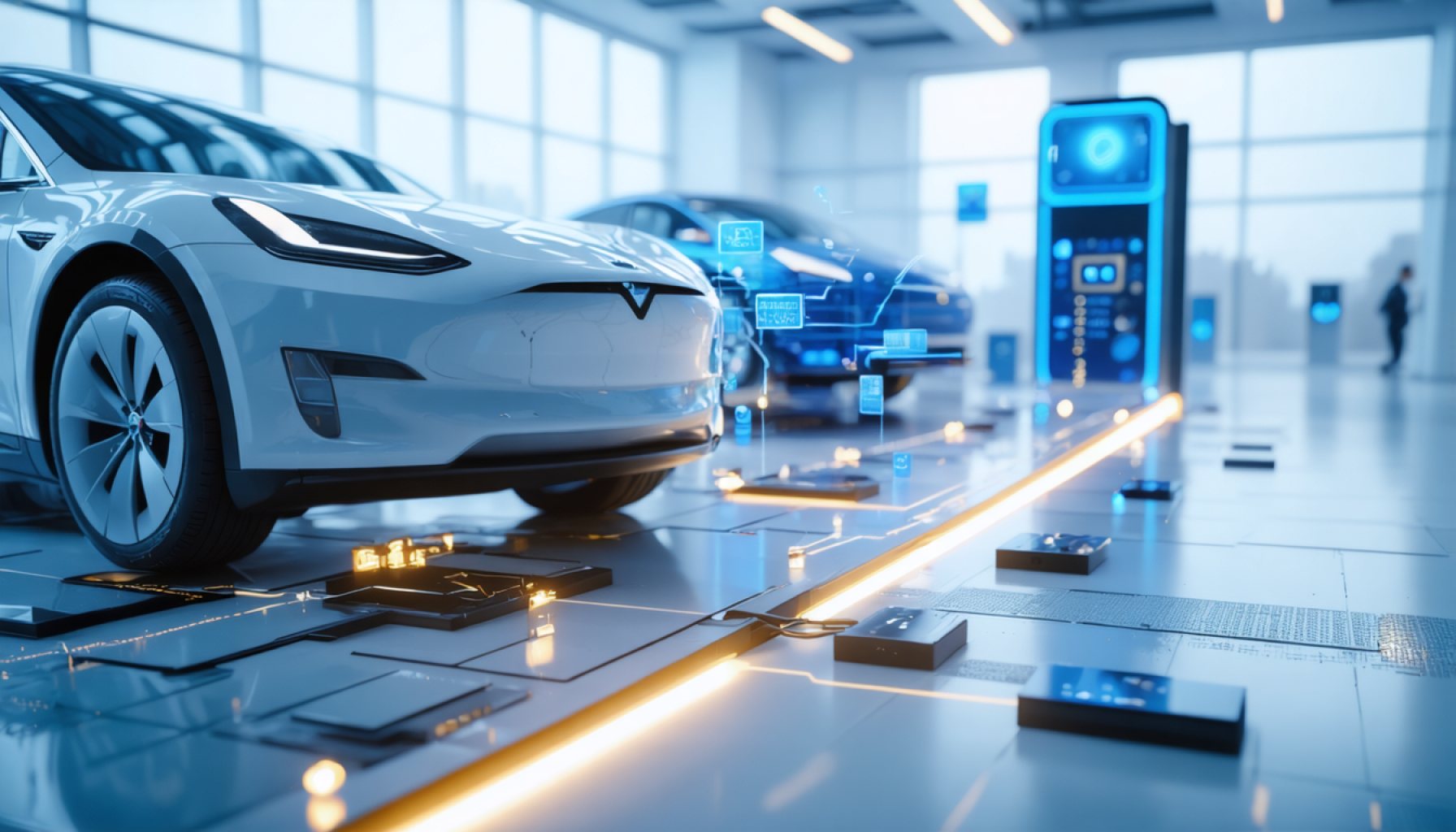
- London hosts a pivotal webinar addressing sustainable paths for end-of-life EV batteries, highlighting innovative recycling solutions.
- Hans Eric Melin advocates for leveraging quality data and informed decision-making to repurpose retired EV batteries effectively.
- The Battery Material Use Hierarchy, presented by Emil Nusbaum, serves as a strategic guide for maximizing battery component utility.
- Developed with Argonne National Laboratory, the hierarchy informs manufacturers, recyclers, and policymakers for optimal material use.
- The session encourages industry collaboration in energy storage innovation, aiming for a balance of sustainability and technological advancement.
- Set in historic London, the gathering highlights the transformative shift towards eco-friendly automotive recycling and energy stewardship.
A quiet revolution is underway in the bustling city of London, where innovators and experts in automotive recycling converge to chart a sustainable path for electric vehicle (EV) batteries. Amidst the grandeur of British history, a cutting-edge webinar is tackling one of modern industry’s most pressing challenges: maximizing the value and sustainability of end-of-life EV batteries.
Hans Eric Melin, a luminary in circular energy solutions, leads the charge. His insights offer more than just technical prowess; they are a roadmap for the future of automotive recycling. When an electric vehicle concludes its journey on the road, its battery holds untapped potential. Melin explores how quality data and savvy decision-making can unleash this potential, transforming what was once waste into a reservoir of resources. His vision brings the promise of a sustainable future into sharper focus.
Adding a robust layer to this dialogue, Emil Nusbaum of the Automotive Recyclers Association unveils the Battery Material Use Hierarchy. This framework is more than just a set of guidelines; it’s a strategic compass pointing towards optimal material use. Developed alongside the bright minds at the Argonne National Laboratory, the hierarchy serves as an indispensable tool for stakeholders across the battery lifecycle—from manufacturers to policymakers. It promises to maximize the utility of every battery component, ensuring that nothing is left to chance.
The session entices a wide array of interests, offering fresh perspectives that extend beyond the confines of industry silos. Whether your domain is recycling, manufacturing, or policy, the discussion opens a window to the future of energy storage. It is a call to action for industries to evolve, innovate, and collaborate, harnessing the untapped potential within every spent battery.
This pivotal moment, set against the backdrop of historic London, is more than a gathering. It is a beacon, illuminating a path towards a future where sustainability and innovation advance hand in hand. The lessons extracted here signify a transformative shift, urging those involved in the automotive and energy sectors to embrace a new epoch of energy stewardship.
The clear message reverberates through the heart of this transition: Embrace the potential of EV batteries, and the path to a sustainable future will rise to meet you.
Lampooning the EV Battery Revolution: London’s Charge Towards a Sustainable Future
Unveiling the Future: Sustainable Solutions for End-of-Life EV Batteries
In the heart of London, a paradigm shift is unfolding as industry leaders and innovators converge to revolutionize the recycling and sustainability of electric vehicle (EV) batteries. With the urgency to maximize their value beyond the vehicle’s lifespan, experts strategize on harnessing the untapped potential of these powerhouses.
Understanding the EV Battery Lifecycle
1. How-To Steps for Recycling EV Batteries:
– Collection: Efficient recycling starts with the collection of the batteries. This involves setting up collection points and ensuring easy access for owners to drop off their expired batteries.
– Assessment: Once collected, batteries are assessed for their condition. This determines whether they need to be refurbished, repurposed, or recycled.
– Processing: Advanced technologies are employed to extract valuable materials like lithium, cobalt, and nickel, which can be reused in new battery production.
2. Life Hacks for Maximizing Battery Life:
– Regular maintenance and adherence to recommended charging practices can extend the lifespan of EV batteries significantly.
– Storage conditions play a crucial role; avoid exposing batteries to extreme temperatures.
Market Forecasts & Industry Trends
1. Growth of EV Battery Recycling Industry:
– The global EV battery recycling market is projected to grow substantially, spurred by increased EV adoption and environmental regulations. According to a report by Fortune Business Insights, the market could reach $18.65 billion by 2030, growing at a CAGR of approximately 32%.
2. Industry Trends:
– Advent of “Battery-as-a-Service” models where users lease batteries rather than owning outright.
– Rise in government funding and policies supporting battery recycling and raw material sustainability.
Reviews & Comparisons: Leading Recycling Methods
– Pyrometallurgical vs. Hydrometallurgical:
– Pyrometallurgical methods involve high-temperature processes to recover metals, often deemed less environmentally friendly.
– Hydrometallurgical methods use chemical solutions for extraction, offering higher recovery rates and reduced emissions.
Controversies & Limitations
– Despite advancements, not all battery components are efficiently recyclable. The industry faces challenges in standardizing processes across manufacturers and achieving economies of scale.
– The reliance on rare metals like cobalt raises ethical concerns due to mining practices.
Insights & Predictions
– Future of EV Battery Technology:
Artificial intelligence and big data are likely to play a significant role in optimizing recycling processes and improving material recovery rates.
Actionable Recommendations and Quick Tips
– For Consumers:
– Participate in battery recycling programs to ensure responsible disposal.
– Stay informed about new battery technologies and recycling infrastructures.
– For Industry Stakeholders:
– Invest in R&D for more efficient recycling techniques.
– Collaborate with policymakers to create supportive legislation for recycling initiatives.
For more information on sustainability and recycling efforts, visit the Automotive Recyclers Association.
London’s efforts set a precedent for the world: embrace the potential of EV batteries, and pave the way to a sustainable future, where innovation and eco-consciousness are inextricably linked.



